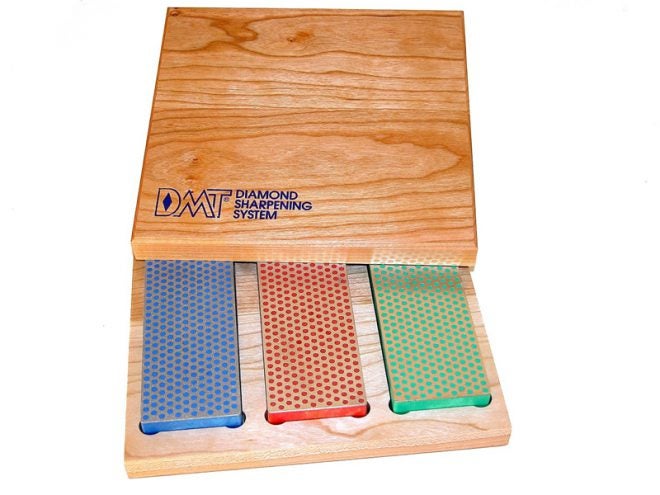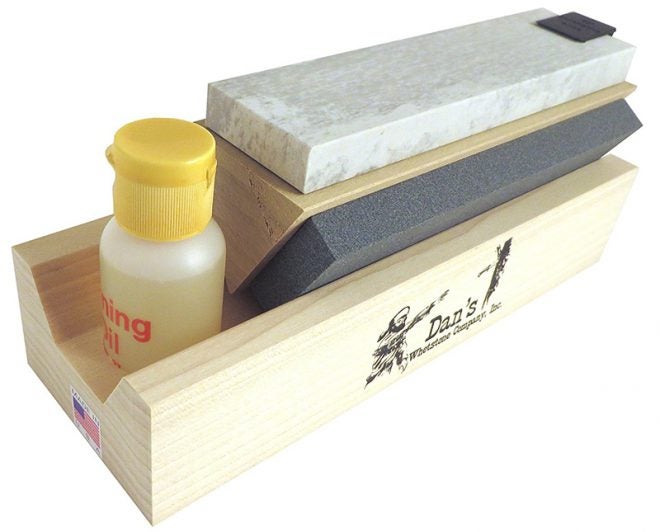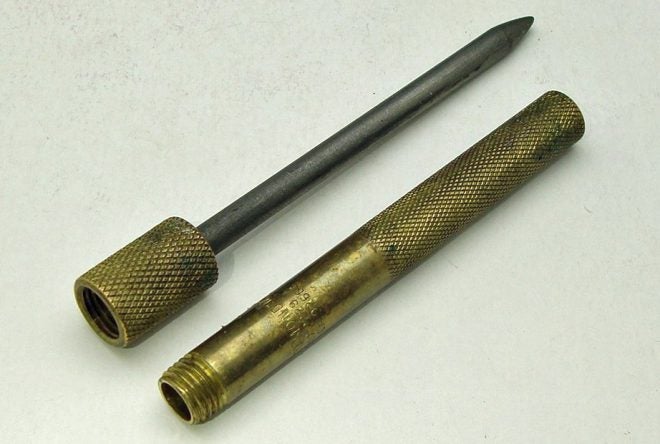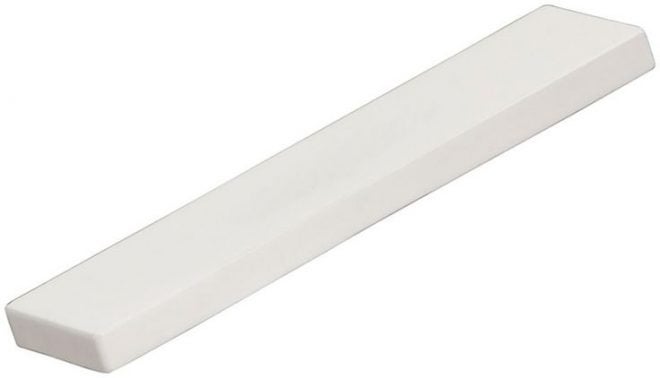5 of the Best Sharpening Stones
Russ Chastain 03.20.18
Knife sharpening is not complicated, and you can hone a knife’s edge on just about anything that’s harder than the blade itself. But some things work better than others, so here’s a quick rundown of some of our favorites.
Knife sharpening is an art form. What you’re doing is taking minute parts of the blade steel away until the edge cuts smoothly and with ease. Sharpening stones of various hardness and grit will make the job easier. The important thing is to move the blade along the stones at the same angle each time. this creates a polished edge. With everything, practice makes perfect, but the end result is a sharp knife. Sharp knives make cutting jobs easier and less stressful.
5) Tri-Hone With Arkansas Stones
When it comes to sharpening a knife with natural stones, I usually think of the old classic Smith’s Tri-Hone. I bought one back in 1987 and it’s still in use today. My main complaint is that the coarse manmade stone didn’t last–and these days Smith’s is producing their Tri-Hone with two manmade stones and only one Arkansas stone, and online reviews telling of uneven and otherwise poor non-flat stones abound. So while a “tri-hone” is a great option, you should probably pick up one from another maker, such as this one.
The benefit of a tri-hone system is that you get three grades or grits of stones in one package, which includes a stand to hold them. Coarse, medium, and fine stones allow you to sharpen your knife in stages… although in my experience with the old Smith’s version, it may actually provide coarse, fine, and ultra-fine.
4) Carborundum, a.k.a. Silicon Carbide
Back when I was a wee lad, my father had a number of whetstones. They were usually gray, and the one he gave me with one of my first knives was labeled “carborundum.” I saw the name on many other stones back then, but haven’t seen it in ages.
Carborundum is actually an old brand name for silicon carbide, named for the company which created the manufacture process more than a century ago. Over the years it became synonymous with similar stones from other companies, and these days most folks know the stones as “silicon carbide.”
Silicon carbide is quite hard, but the stones are manmade and cheaper ones will show wear quickly. Even name-brand SiC stones will dish with time, but carborundum stones have been successfully used for generations, and they still work just fine today.
3) Eze-Lap Model M
This one differs from the rest because it’s not a stone and doesn’t even pretend to be one; it’s a simple pocket-size metal rod with a coating of diamonds. It’s self-storing and lasts for ages. And because I’ve had an Eze-Lap Model M for at least 25 years, I felt I must include it here.
The portability and ease of use is hard to beat; I can put an edge on any knife in short order. Alas, they do wear, but even after decades at hunt camp, mine will still do to touch up a knife’s edge while I’m shucking out a deer or hog. Simply rinse it in water from time to time to clean the bits of steel from the diamond-impregnated surface, and it will serve you well. When you’re not sharpening, the rod stores inside the hollow brass handle.
2) Ceramic Sharpeners
Ceramic sharpening stones are made of hard ceramic powders mixed with zirconium oxide or aluminum oxide. They are long-lasting because they’re so tough, but they’re also brittle — so don’t drop one if you can help it.
Ceramic stones are most often available in fine grits, so they may not be that useful for everyday working knives, which may need a fairly aggressive grit to restore an edge after the knife’s done a lot of work. But their long life means that a ceramic might be the perfect finisher, and if cared for properly it will probably outlast you.
1) Diamond “Stones”
When I began deer hunting with the menfolk at the ripe old age of 13, my buddy Art had a DMT diamond knife sharpener which he loved. It was one of the first ones I’d ever seen, and it was impressive. Alas, someone stole it from his toolbox at work soon thereafter.

The main benefits of a well-made diamond “stone” are the longevity of the sharpening surface and the precision/consistency of the grit. You will know what to expect every time you pick up a black, blue, red, or green DMT stone, for example.
Long life, effectiveness, and consistency; that’s tough to beat.


